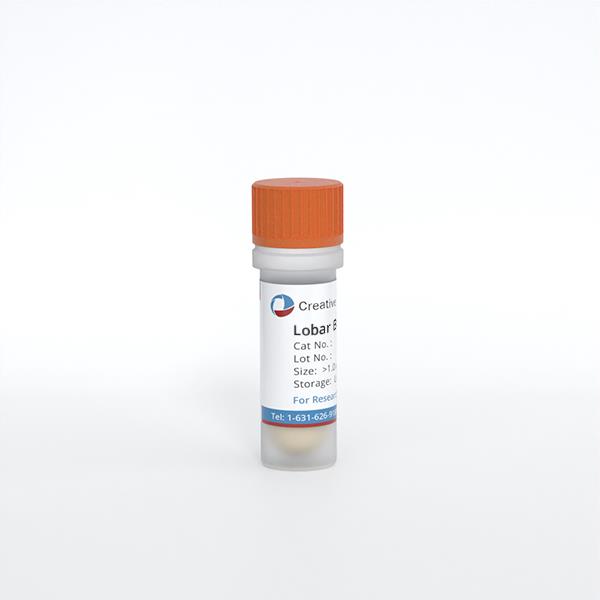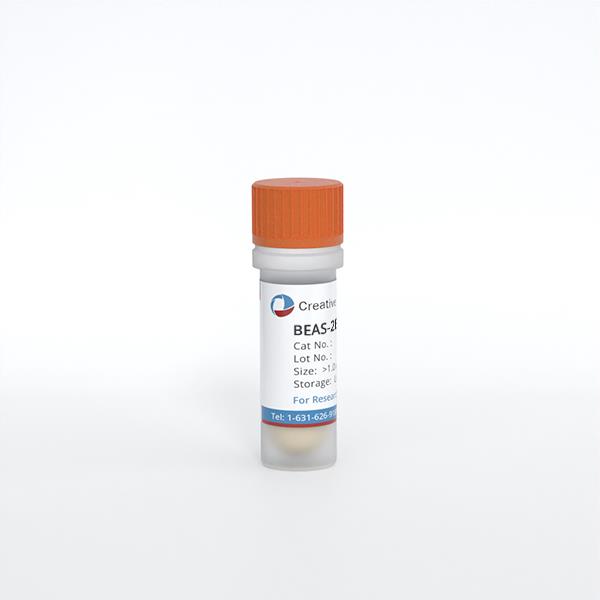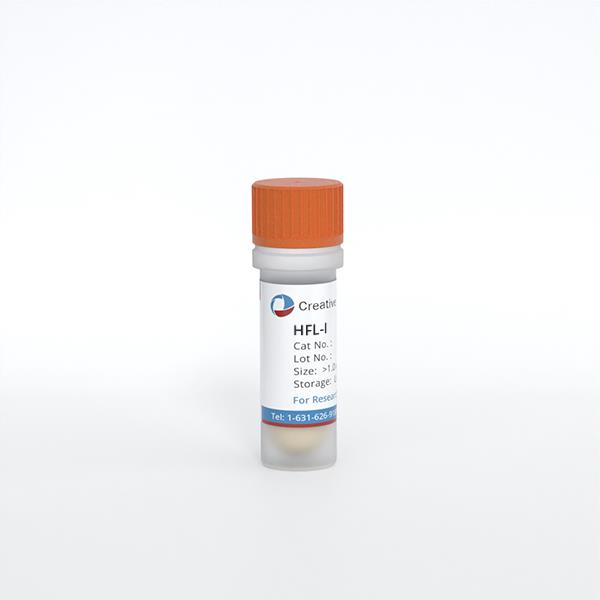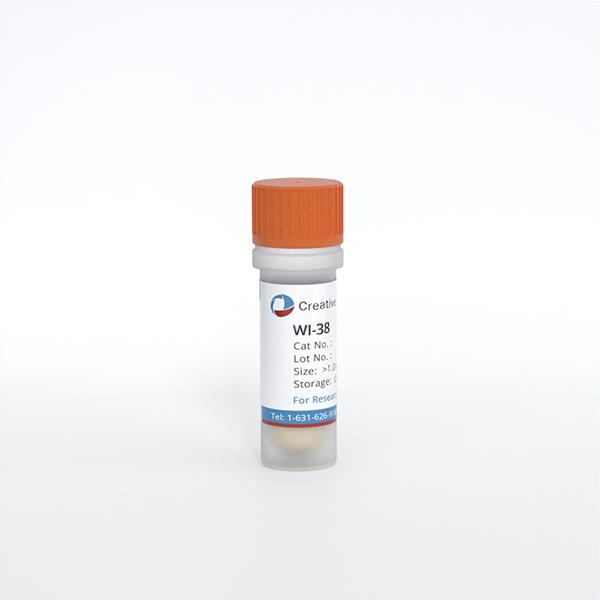Bronchial/Tracheal Cells
Bronchial/Tracheal cells are from the lining of the bronchi/trachea, the network of tubes used to convey air to the lungs. Bronchial/Tracheal cells are responsible for producing lubricating mucus to keep the airways functional and they are a type of epithelial cell, a term used generally to refer to cells lining the inside or outside of the body. These cells generate mucus and a number of other compounds, which play an important role in respiration. At Creative Bioarray, we provide 9 types of human bronchial/tracheal cells including Human Tracheal Fibroblasts, Human Small Airway Epithelial Cells, Human Bronchial Epithelial Cells (HBEpC), Lobar Bronchial Epithelial Cells, etc. These cells provide excellent model systems to study all aspects of bronchial/tracheal cells’ functions and diseases, particularly those related to airway viral infections, as well as tissue repair mechanisms, signaling changes and potential treatments relevant to lung injuries, mechanical and oxidative stress, inflammation, pulmonary diseases and smoking.
Filters Clear all filters
Species
- Bovine (22)
- Canine (2)
- Cat (1)
- Chicken (6)
- Chinchilla (1)
- Cynomolgus Monkey (1)
- Dog (114)
- Fish (1)
- Fruitfly (1)
- Goat (2)
- Guinea Pig (8)
- Hamster (94)
- Horse (1)
- Human (800)
- Minipig (2)
- Monkey (128)
- Mouse (875)
- Pig (106)
- Porcine (4)
- Rabbit (249)
- Rat (324)
- Sheep (2)
- Squirrel (1)
- Turkey (1)
Source
- Adipose (28)
- Adrenal Gland (10)
- Airway (7)
- Anus (3)
- Aorta (83)
- Aortic Valve (1)
- Artery (180)
- Bile Duct (9)
- Bladder (45)
- Blood (190)
- Bone (13)
- Bone Marrow (156)
- Brain (159)
- Breast (63)
- Bronchus (43)
- Cartilage (19)
- Cerebral Cortex (1)
- Cervix (5)
- Chorion (5)
- Choroid (8)
- Choroidal (1)
- Ciliary Body (1)
- Colon (63)
- Conjunctiva (8)
- Cord Blood (24)
- Cornea (24)
- Dental Pulp (4)
- Dermis (109)
- Diaphragm (3)
- Ear (10)
- Embryo (21)
- Endometrium (9)
- Epidermis (25)
- Epididymis (3)
- Esophagus (31)
- Eye (88)
- Foreskin (2)
- Gallbladder (4)
- Gingiva (18)
- Hair Follicle (15)
- Heart (64)
- Intestine (152)
- Iris (1)
- Kidney (145)
- Lens (4)
- Liver (117)
- Lung (190)
- Lymph Node (27)
- Mesentery (18)
- Nose (3)
- Oral (1)
- Oral Cavity (8)
- Oral cavity epithelial tissue (1)
- Ovary (70)
- Oviduct (6)
- pancreas (1)
- Pancreas (66)
- Pancreatic Duct (3)
- Pancreatic Islet (11)
- Parathyroid Gland (4)
- Penis (6)
- Perineurium (1)
- Periodontal Ligament (5)
- Periodontium (23)
- Peripheral Blood (152)
- Peritoneal Cavity (14)
- Placenta (29)
- Prostate (62)
- Pudenda (2)
- Rectum (3)
- Retina (37)
- Salivary Gland (3)
- Scalp (1)
- Sclera (3)
- Seminal Vesicle (1)
- Skeletal Muscle (35)
- Skin (152)
- Small Intestine (55)
- Spinal Cord (10)
- Spleen (74)
- Stomach (36)
- Synovial Fluid (2)
- Synovium (11)
- Tendon (6)
- Testis (14)
- Thymus (47)
- Thyroid (34)
- Tongue (4)
- Tonsil (3)
- Tooth (4)
- Trabecular Meshwork (3)
- Trachea (42)
- Umbilical Cord (29)
- Ureter (8)
- Uterus (58)
- Vas Deferens (1)
- Vein (104)
Cell Type
- Adipocyte (4)
- Astrocyte (32)
- B Cell (30)
- Basal Cell (3)
- Basophil (1)
- Beta Cell (3)
- Cardiomyocyte (15)
- CD133+ Cell (6)
- CD34+ Cell (21)
- Cholangiocyte (9)
- Chondrocyte (14)
- Dendritic Cell (15)
- Endothelial Cell (686)
- Endothelial Progenitor Cell (7)
- Eosinophil (1)
- Epithelial Cell (486)
- Fibroblast (452)
- Fibroblasts (2)
- Glial Cell (58)
- Granule Cell (2)
- Granulocyte (12)
- Hepatic Stellate Cell (9)
- Hepatocyte (22)
- Interstitial Cell (9)
- Keratinocyte (23)
- Keratocyte (3)
- Kupffer Cell (8)
- Leydig Cell (3)
- Lymphocyte (82)
- Macrophage (31)
- Mast Cell (3)
- Melanocyte (11)
- Meningeal Cell (4)
- Mesangial Cell (10)
- Mesothelial Cell (4)
- Microglia (7)
- Microvascular Cell (306)
- Monocyte (16)
- Mononuclear Cell (107)
- Myeloid Cell (2)
- Myoblast (5)
- Myofibroblast (3)
- Myosatellite Cell (2)
- Neuron (50)
- Neutrophil (10)
- NK Cell (11)
- Oligodendrocyte (3)
- Oligodendrocyte Progenitor Cell (4)
- Osteoblast (8)
- Osteoclast (2)
- Osteocyte (3)
- Pancreatic Stellate Cell (4)
- Pericyte (20)
- Podocyte (4)
- Preadipocyte (17)
- Progenitor Cell (15)
- Red Blood Cell (12)
- Retinal Ganglion Cell (3)
- Satellite Cell (2)
- Schwann Cell (4)
- Sebocyte (1)
- Sertoli Cell (5)
- Skeletal Muscle Cell (9)
- Smooth Muscle Cell (233)
- Spermatogonium (3)
- Stromal Cell (38)
- Synoviocyte (12)
- T Cell (37)
- Tenocyte (6)
- Trabecular Meshwork Cell (3)
- Trophoblast (4)
Disease
- Acute Lymphocytic Leukemia (ALL) (15)
- Acute Myeloid Leukemia (AML) (13)
- Amyotrophic Lateral Sclerosis (ALS) (4)
- Aplastic Anemia (AA) (1)
- Arteriovenous Malformation (AVM) (1)
- Asthma (5)
- Astrocytoma (2)
- Autoimmune Hemolytic Anemia (AIHA) (1)
- Autoimmune Lymphoproliferative Syndrome (ALPS) (1)
- Breast Cancer (8)
- Cancer (144)
- Cervical Cancer (2)
- Chronic Lymphocytic Leukemia (CLL) (19)
- Chronic Myeloid Leukemia (CML) (14)
- Chronic Obstructive Pulmonary Disease (COPD) (6)
- Colon Cancer (9)
- Crohn's Disease (3)
- Cystic Fibrosis (CF) (7)
- Diabetes (110)
- Diabetes Type 1 (16)
- Diabetes Type 2 (18)
- Diffuse Large B-Cell Lymphoma (4)
- Dilated Cardiomyopathy (DCM) (1)
- Disease: Osteoarthrits (OA) (1)
- Disease: Rheumatoid Arthritis (RA) (1)
- Duchenne Muscular Dystrophy (DMD) (5)
- Essential Thrombocythemia (ET) (1)
- Glioblastoma (3)
- Guillain-Barre Syndrome (GBS) (1)
- Hypertension (27)
- Idiopathic Thrombocytopenic Purpura (ITP) (1)
- Inflammatory Bowel Disease (IBD) (5)
- Iron-Deficiency Anemia (1)
- Kidney Cancer (3)
- Legg–Calvé–Perthes Disease (LCPD) (2)
- Leukopenia (1)
- Liver Cancer (3)
- Lung Cancer (12)
- Mantle Cell Lymphoma (MCL) (8)
- Melanoma (2)
- Mucopolysaccharidosis (2)
- Multiple Myeloma (MM) (12)
- Multiple Sclerosis (MS) (3)
- Muscular Dystrophy (MD) (1)
- Myelodysplastic Syndrome (MDS) (3)
- Neurofibromatosis (NF) (3)
- Non-Hodgkin Lymphoma (NHL) (10)
- Normal (2371)
- Osteoarthritis (OA) (4)
- Ovarian Cancer (6)
- Pancreatic Cancer (3)
- Pancytopenia (1)
- Parkinson's Disease (PD) (2)
- Plasmacytoma (1)
- Polycythemia (1)
- Prostate Cancer (6)
- Psoriasis (4)
- Rheumatoid Arthritis (RA) (6)
- Robertsonian Translocation (ROB) (1)
- Sickle Cell Anemia (2)
- Systemic Lupus Erythematosus (SLE) (4)
- Thrombocytopenia (1)
- Transverse Myelitis (TM) (1)
- Ulcerative Colitis (UC) (2)
- Waldenström Macroglobulinemia (WM) (2)
Description: The most abundant cell type in the bronchus is fibroblasts. They resemble a mesenchymal stem cell ...
Description: Human Primary Tracheal Fibroblasts are isolated from normal human tracheal tissue. Human Primary ...
Description: Recent research indicates cancer associated fibroblasts (CAFs) significant involvement in crucial ...
Description: The epithelium serves as the interface between the body and the external environment, covering all ...
Description: Special edition cells are isolated from the tissue types described. Cells are sterility and virus ...
Description: Creative Bioarray's normal Human Bronchial/Tracheal Epithelial Cells, when grown in Creative ...
Description: Human Bronchial/Tracheal Epithelial Cells-Cystic Fibrosis (HBECs-CF) are isolated from cystic ...
Description: Human Bronchial Epithelial Cells are isolated from normal human bronchial tissue.
Description: Human hypertension bronchial epithelial cells from Creative Bioarray are isolated from the ...
Description: Human hypertension tracheal epithelial cells are isolated from the tracheal tissues of human donor ...
Description: Human hypertension brochial smooth muscle cells are isolated from the Brochi of human donor that ...
Description: Epithelial cells were isolated from normal human bronchial epithelium obtained from autopsy of ...
Description: The WI-38 human diploid cell line was derived by Leonard Hayflick from normal embryonic (3 months ...
Description: Mouse Bronchiole Endothelial Cells are isolated from normal mouse bronchi tissue. Mouse Bronchiole ...
Description: Mouse Bronchial Smooth Muscle Cells are isolated from normal mouse bronchi tissue. Mouse Bronchial ...



